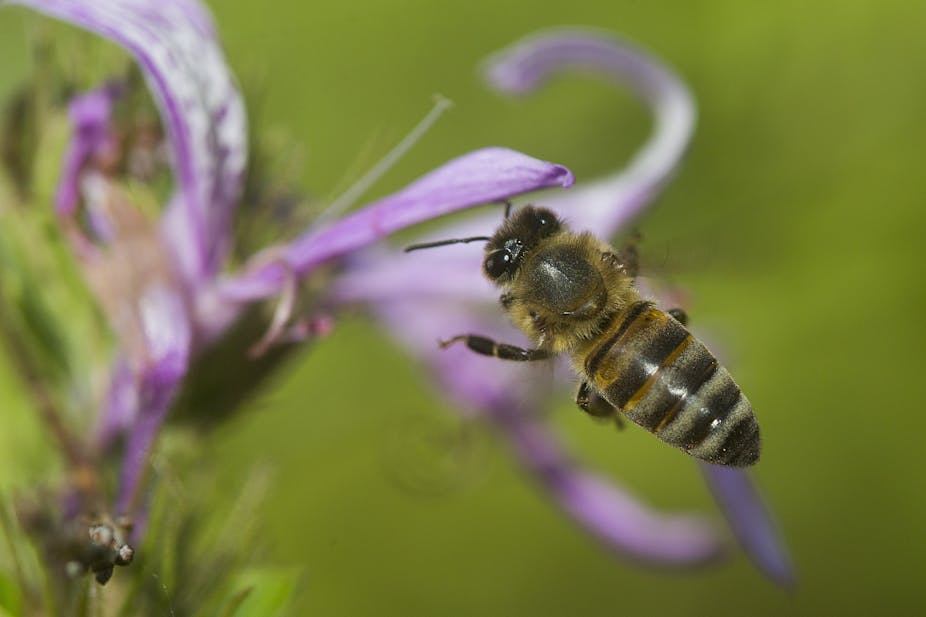Until recently, sub-Saharan Africa was thought to be free from the American foulbrood disease, which afflicts its honeybee population. This was believed to be due to the African honeybees’ biology, and possibly that American foulbrood strains in Africa have a low virulence and rarely generate outbreaks. However, it is not the case.
The first Cape honeybee colonies with heavy clinical symptoms of American foulbrood disease were found in South Africa’s Western Cape in December 2008 and confirmed with laboratory tests in February 2009. To date, an estimated 40% of the Western Cape bee population has been wiped out by the disease.
Just how bad is it?
Insect pollinators, especially solitary and social bees, play the major role in providing pollination services. Besides pollinating wild plants, managed honeybees are the most economically valuable pollinators of crop and fruit monocultures worldwide.
The value of honeybees to the agricultural industry - of pollination, honey, and beeswax - is estimated at R20 billion. A continued loss of honeybee colonies thus poses a crisis not only to the industry, but also potentially to the Cape Floristic Region, an area of high distinctive biological diversity and endemism. It is globally recognised as a significant centre of diversity for plants.
American foulbrood in South Africa will cause a collapse in pollination services. It will negatively affect species richness and biodiversity, as well as potentially drive the Cape honeybee to extinction.
What is the disease?
American foulbrood presumably dates back to Aristotle (384–322 BC). In one of his books, he described a diseased condition that was:
… smelling unpleasant and leaving the bees sluggish.
Even though Aristotle’s description is not sufficient to identify American foulbrood with certainty, it suggests that bees then suffered similar diseases to those we refer to today as foulbrood.
American foulbrood is a larval disease of honeybees. The causative agent of American foulbrood is a bacterium known as Paenibacillus larvae.
The bacterium produces infected spores which contaminate larval food. Adult bees transmit the disease to uninfected larvae during larval feeding. The bacterium enters the larva’s digestive tract.
The disease is highly contagious and produces very high numbers of spores. Ten spores or fewer is sufficient to cause infections in honeybee larvae, as has been shown for bees originating from Europe.
The spores germinate in the larval midgut and multiply with the bacteria, finally penetrating the intestinal epithelium. At this time it enters the larval body cavity, killing the larva.
In dead larvae the bacterium continues to grow and form spores. The larval body turns brown and decomposes to a semi-fluid glue-like remain with a specific smell. This is American foulbrood’s most characteristic clinical symptom.
As disease progresses within the colony, the number of young bees drops drastically. The foulbrood-infected bee colony collapses and eventually dies.
American foulbrood is highly contagious and the extremely high numbers of spores produced – about 2500 million spores in just one individual – are exceptionally environmentally stable. They retain their infectivity for more than 35 years. The disease is easily transmitted between colonies, apiaries and even countries.
Within a colony, spores are transmitted to larvae via feeding. Transmission between colonies is through bees robbing other colonies for resources. Long-distance transmission occurs through the importation of infected queens, colonies and contaminated honeybee products.
American foulbrood is among the most lethal and severe bee diseases. It is distributed worldwide and causes significant losses in honeybee populations and considerable damage to the beekeeping industry.
What can be done about it?
There is still no cure for American foulbrood. Because of the production of extremely high numbers of long-lived spores in diseased colonies, the control of American Foulbrood is very difficult.
The disease is often treated with the registered antibiotic, oxytetracycline (OTC). While this may seem to “solve” the problem in the short term, unfortunately the over-use of OTC has led to widespread resistance of honeybees to OTC.
Therefore, the best way to treat American foulbrood is to destroy all colonies and equipment by burning – known as the eradication method – once diagnosed. This is considered to be the only effective measure.

